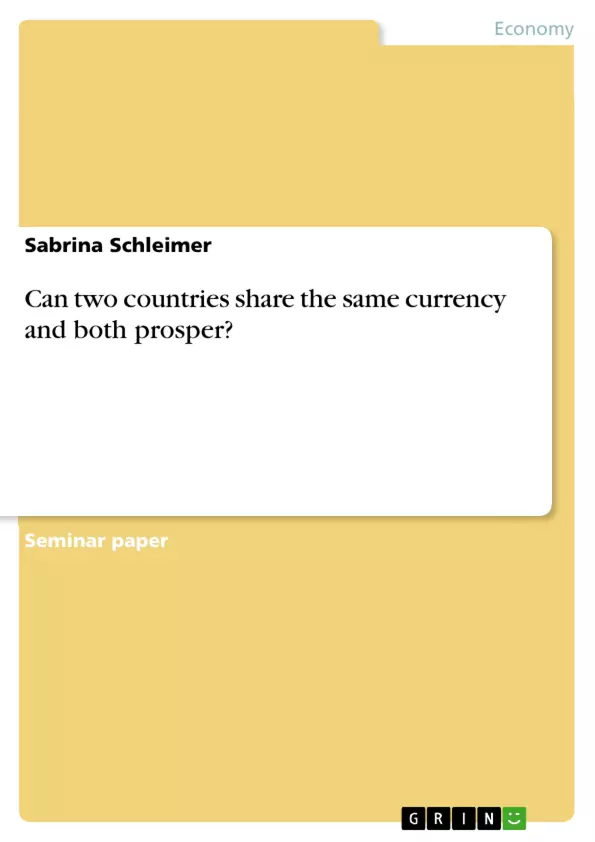This assignment will examine whether two countries can share the same currency and both prosper. In order to find out, arguments both in favour and in opposition to the research question will be discussed and evaluated. Finally, a conclusion will be drawn.
Before starting a detailed discussion, it is vital to establish precise definitions of the terms “sharing a currency” and “prosper”. For the purpose of this paper, “sharing a currency” is defined as being a member of a monetary union. According to Bergin (2008), a monetary union, also referred to as a currency union, is an association of at least two sovereign states which give up their national currencies to adopt a new shared currency. The author further states that by doing so, the member countries surrender their control over money supply as well as monetary policy to a shared authority, a new central bank. There are multiple currency unions all over the world, which is why, to apply this broad definition, this paper will use the Economic and Monetary Union (EMU) as an example.
The second important term, “prosper”, is a little more difficult to define as there is a vast number of possible prosperity indicators, such as the unemployment rate or the wage level. For the purpose of this paper, “prosperity” is defined in accordance with Fritz and Koch (2016) as the level of “economic development and material welfare”. Thus, if this level increases, prosperity in a state also does. Fritz and Koch (2016) argue that the higher the economic development in a country, the higher its individual and social prosperity. In order to gauge the level of prosperity of a state, a number of indicators are very useful.
One of the most important indicators for prosperity is the Gross Domestic Product (GDP) of a country. According to the Organisation for Economic Co-operation and Development (OECD) (Gross domestic product (GDP), 2016), the GDP indicates “the expenditure of final goods and services minus imports”. In addition to the GDP, the level of trade is an important indicator for a nation’s prosperity. As explained by the World Bank (Exports of goods and services (% of GDP), 2017), it is determined by the exports of both goods and services as a share of the respective country’s GDP.
Table of Contents
- Introduction
- Main discussion
- Advantages of a monetary union
- Disadvantages of a monetary union
- Conclusion
Objectives and Key Themes
This assignment aims to examine whether two countries can share the same currency and both prosper. The paper will analyze the benefits and drawbacks of monetary unions and conclude whether such unions are ultimately conducive to prosperity for its member countries.
- The impact of monetary unions on transaction costs
- The relationship between monetary unions and trade levels
- The role of flexible exchange rates in determining economic stability
- The potential for increased financial integration within a currency union
- The long-term effects of monetary unions on economic prosperity
Chapter Summaries
The introduction defines the terms "sharing a currency" and "prosper" in the context of this paper. It establishes the Economic and Monetary Union (EMU) as a case study and focuses on the experiences of Germany and France within the union. The paper then delves into the advantages and disadvantages of joining a monetary union, drawing on the theory of optimum currency areas (OCAs).
The main discussion section explores three key arguments in favor of prosperity as a result of a monetary union: reduced transaction costs, increased trade levels, and the abolishment of flexible exchange rates. It highlights the role of the euro in fostering trade and economic growth within the EMU.
Keywords
Key concepts explored in this paper include monetary union, optimum currency area, transaction costs, exchange rates, trade levels, financial integration, economic prosperity, and the euro.
- Quote paper
- Sabrina Schleimer (Author), 2018, Can two countries share the same currency and both prosper?, Munich, GRIN Verlag, https://www.grin.com/document/437651



